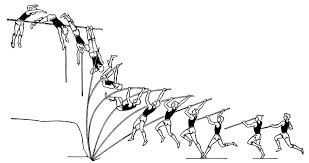
The Hyperlearning Environment
For several reasons, getting from Plan A to Plan B requires a cognitive demolition derby followed by an intellectual leap. The fuel for this jump comes from adult learning at its best. Slow means no.
Implementation experience makes it clear that the switch from A to B paradigms must be done in a single assault. The premium on high-capacity adult learning has called all conventionally-employed learning methods into question.
The research done on the hyper-learning criteria of adult learning has been well established. The duration and frequency of conclaves has an optimum that structures the FLLP. The worst conditions for adult learning? Those are the ones, like all-day seminars, in common use. Since the knowledge is readily available, the lesson is that most programs of high-stakes adult learning are dismal failures by intent. POSIWID
The universal, social-pressure forcefield is towards Plan A. When society is in Plan A mode, everyone persuades you to conform to custom, tradition, and business as usual. That forcefield does not abate when progress is being made in change. Every time you pause the learning effort, things ooze back towards Plan A by themselves. This action is caused by the Nash Equilibrium, which works for keeping Plan B intact as well. The engine of hyperlearning is the FLLP class. Participants are boosted in learning by their proactive peers.
Adult learning is always about change, another word in common use that goes undefined. The fact is that the Second Law incessantly changes everything material. Thereby, any definition of change you offer must be tested against this universal force of change.
When the change is psychological, as in the Plan A-B case, any definition of change you offer must be tested against the brute fact your subconscious mind is making decisions, using the fiction it warehouses, about the changes several times a minute. The interventionists definition of change is the Ackoffian Triad. You must define both your starting conditions and your attainable goal in depth. Then you must define a doable, non-magical process for getting from start to finish.
The whole website here is about defining the starting conditions of Plan A, defining the conditions of Plan B from real time experience, and mapping the path from A to B via the FLLP. Each part needs to be learned by the keystones because they will be using the knowledge every day for the rest of their lives. Random walks may bring change, but seldom ones that do anyone any good.
Because of the inherent time constraint, only adult hyper learning methods will get the change done. Hyperlearning principles incorporated in the FLLP include:
- Only peers in the classroom
- Class size 5-10
- Two-hour episodes
- One episode a month
- A season consists of seven episodes
- Five months between seasons
- No homework, tests, or grades
Making the cognitive leap from psychologically-damaged goods to Plan B does resemble a pole-vault of the mind. A balls-out sprint is capped by a knowledge building frenzy to get over the bar. Nothing but the most effective forms of adult learning have a chance. The arsenal of hyper-learning practices does not include, correspondence courses, lecture halls, case studies, or memory work. For decades, academia tried to teach system think by parading a series of discipline experts in front of the audience, not one a self-proclaimed systems engineer. The experiment in intellectual osmosis was a total flop.
To get to Plan B, your interventionist must function above the mentor line, a zone that can be inhabited only by cross-disciplinary system thinkers. In fact the jargon associated with Plan B is the proof of residency. Not one in a thousand can define “system” or “intelligence” as they apply to implementation.
Views: 162

